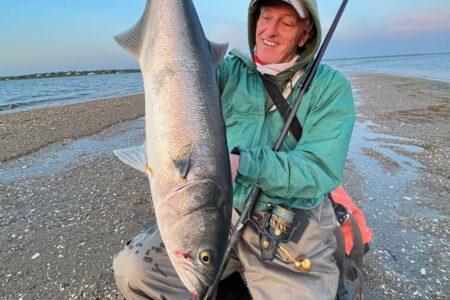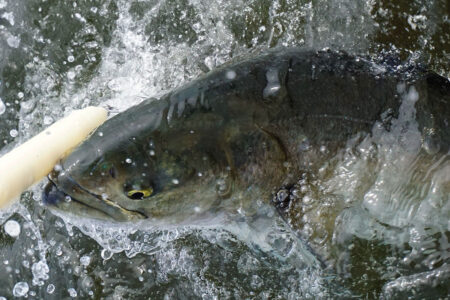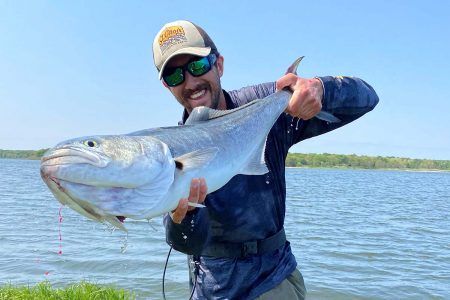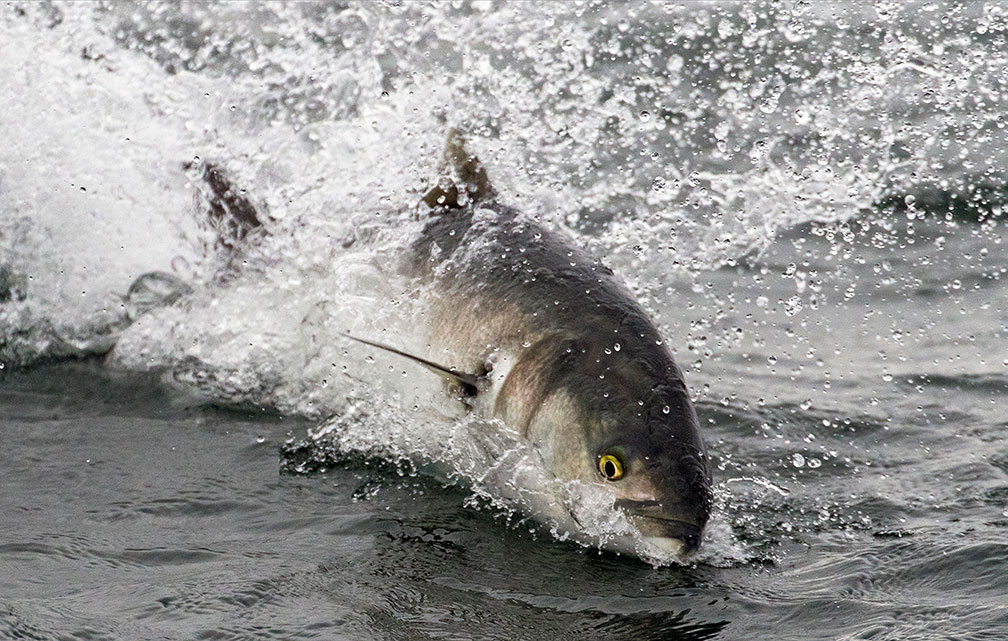
Be ready when the bluefish swarm invades the island.
We’re lucky to have truly great fishing in our area for both bluefish and big striped bass right now. Things haven’t been like this in many other parts of the country in recent years, where what “used to be” isn’t the way it is anymore. This is mostly due to ecosystem degradation, including climate breakdown and overfishing. We have concentrations of blues and bass right here right now, and we should go out and enjoy our time fishing for them while they’re here while still being aware of our conservation and environmental responsibilities. When it comes to fishing in our lifetimes, it never has lasted as long as we at first thought it would. So, go fishing; the time is now.
When it comes to bluefish, it might not get better anywhere on the East Coast than here, especially in the spring, and I’m excited to announce that fishing is just around the corner, if not in some places here already.
Time’ Em Right
Those blues, and they’re big, often 7 to 10 pounds, commonly up to 12, with more than a few going to 16 and even 18 pounds will first show up in Raritan Bay, inside Sandy Hook, at the beginning of May or eve the end of April.
Right after that (if not about then) they’ll make their appearances all along Long Island’s South Shore, in the bays inside its inlets, Rockaway, Jones, Fire Island, Moriches, and Shinnecock. They’ll also, before long, move into the back of Jamaica Bay. At sometime during May they’ll show up in all these locales.
In May and into the beginning of June, more bluefish schools will appear at Montauk and then inside Gardiners and Peconic Bays (often way back in, too). Now, I’m not talking about a few fish or even just a few schools here. I’m talking about lots of bluefish and lots and lots of schools in any area where you find them. In total, this is a mass of fish, and for the most part, they’re in shallow water, 2 to 8 feet deep and no deeper than 10 to 12 feet. There are exceptions, which I will get to.
This makes them available along many shorelines and beaches, to both boat and shore anglers alike. That access and skinny depths makes it special. You often see the fish you’re fishing too. The surface takes are dramatically explosive, the fights as hard as a bluefish can make them, and you’ll never see a bluefish jump more. It’s just spectacular fishing!
Deep Water Exceptions
When the fish come into Montauk, they are often over the deepwater rips, and on the South Side, they’re often both shallow and deep. I’m not going to leave you Western LI Sound anglers out of the picture. The big blues invade your area at the end of May and beginning of June but will only be over the deepest water, which essentially means “in the middle,” from Bayville to Port Jefferson on the south shore and off Rye to Fairfield CT, along the “mainland.” Few will be shallow here this time of year.
The blues will be in these areas until about the middle of June and will, for the most part, disappear after that, with exceptions. They might leave Shinnecock and Raritan earlier and in the Sound until the end of June. In the hottest summer weather, they’ll show up again shallow at Montauk Point. There’s also an exception in the far Western Sound in late summer and early fall, which I’ll cover.
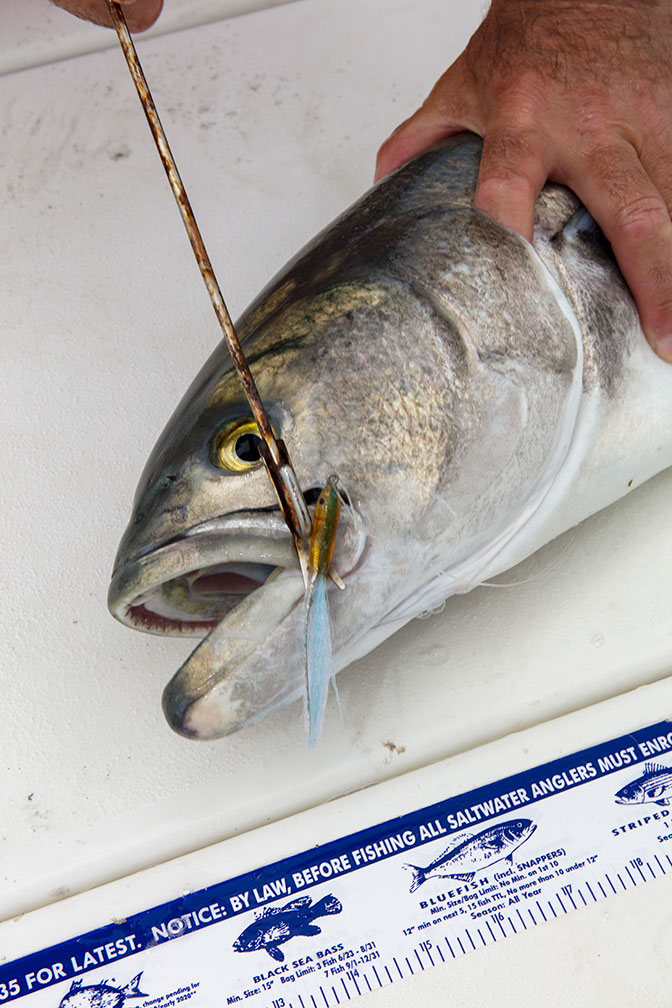
Fin-Nomenon
When these big fish are in shallow water (everywhere they are like this) and over the deep middle of the Sound in May and June, they’ll be on and close to the surface and “finning.” It’s a phenomenon where you will see wiggling sharp, pointed triangles quivering inches above the water’s surface. It’s most easily seen on a calm, “flat” surface. Sometimes you see a few, sometimes you see incredible numbers, and they will appear often all over the area you’re fishing. This will be accompanied by rolling fish, swirls, V wakes, “nervous” water, and the occasional explosion. Those triangles are the tops of the bluefish’s caudal (tail) fins, and you’ll see them go up and down, disappearing and reappearing. When doing this, the bluefish are not feeding, nor is it spawning behavior. What’s actually happening is that the blues have already fed and are up on the surface, often in bright sun, digesting their meal. Since they’re cold-blooded, they’re looking for the warmest water (shallow and/or on top), which will aid and speed up digestion. You’ll often see them turning their sides (flanks) to the sun (you’ll see a flash) to get more heat too. Captain Ian Devlin of Norwalk, CT, was the first to recognize what this confounding activity was. It’s similar behavior to what swordfish do. The fish are in our area to feed on the plethora of menhaden that are around at this time (at Montauk last year, it was sand eels), and these schools of bait will be in the general area where “finning” is taking place, and for some reason often fairly far away too. Blues may swim a mile or much more to go “fin.”
Drawing Strikes
You catch these fish by exciting and “goading” them into striking, which is most easily done with a surface popper, Zara Spook type lure, Doc, or, if fly fishing, a fly rod popper. Make a commotion with what’cha got. At times, they will take subsurface. But why fish like that when the surface alternative is so explosive and visual?
Throw to the head of the school, ahead of some spotted fish, or even (at times) into the middle of the school. Some fly guides bring the fish to the boat for a closer fly cast using a hook-less Doc plug. Sometimes, it looks like a foaming and lunging circus behind that plug.
I would recommend that you use only one treble hook or a single or two single hooks on your plug so that releasing that predator is easier. It’s safer, too. Use 6 to 10 inches of wire (or very thick mono) ahead of that lure or fly also.
May Through June
In May through June in the Western Sound the bunker are often near the predators, and you’ll have the blues sometimes alternating between bunker feeding and finning around the same area. If blitzing, throw a big Doc or your favorite big lure, a live bunker, chunk, or if using fly, a big 10 to 14-inch Bunker Pattern, like a Sedotti’s Slammer on a sinking line. Retrieve that fly at a fast pace. For both lure and fly, cast into or to the perimeter of the bunker school or to individual sighted fish or explosions.
This blitzing will happen primarily early and late in the day. In sand eels on Montauk’s South Side, use a sand eel imitation (lure or fly), bucktail, or diamond jig. A popper could be good here, too.
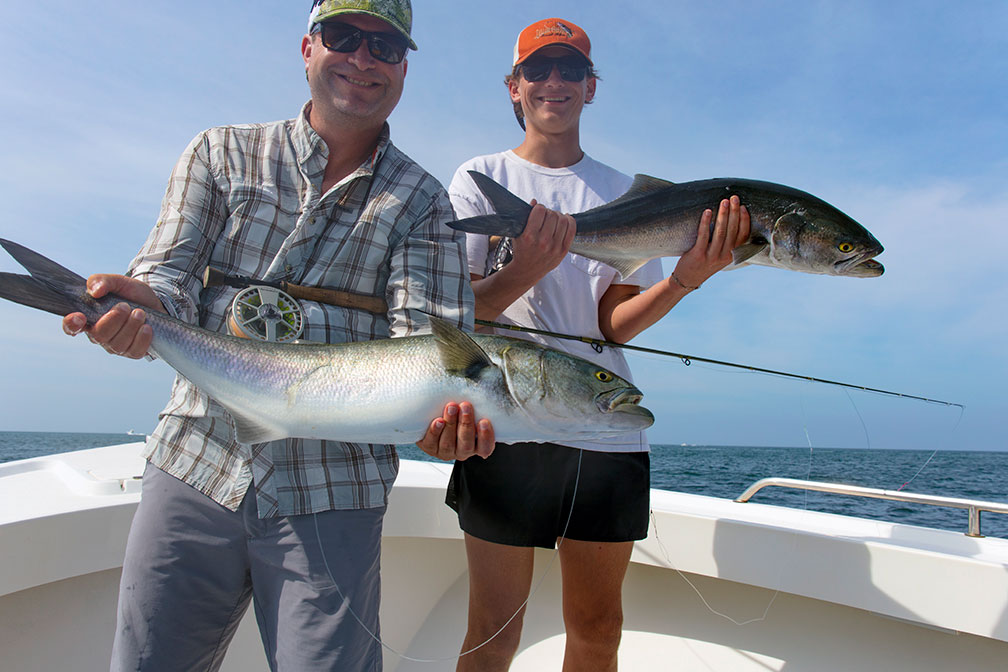
Fin Time
Most finning starts at about 9:30 a.m. and goes through the middle of the day, all the way to about 4 p.m. It happens in sun and can happen on overcast days as well. In Shinnecock it “gets going” in “early” morning 7 a.m. or so. I’ve seen “finning” going all the way to 6 p.m. or so at times too.
Ultimately, this is good fishing during gentlemen’s hours; convenient; you get some sleep, eat some breakfast, leave the dock leisurely, fish in the sun and middle of the day, and return for dinner too. Good fishing isn’t always that way.
In July and August, when most blues are gone from where they were, there will be good bluefishing in the Race (cooler water), around Block Island, and as the summer gets late, in far Western Long Island Sound. In the Sound, you’ll see blitzing around bunker schools. There was also great fishing here last year (Manhasset, Hempstead) in late summer and early fall when schools of 5 to 7-inch bunker showed up. This is an easy bait to copy in lure or fly, and it can draw big fish (blues and, when present, bass). Productive flies are 5 to 7-inch Deceivers, Mushmouths, and 5 to 7-inch bunker patterns. Good lures are poppers like the Zara Spooks, 7-inch Doc or Madd Mantis, bucktails, and big Rat-L-Traps.
Big Blue Tackle
Fly Tackle – Use 9 or 10-weight rods. With big bunker flies you can use an 11 weight. Floating and intermediate lines for finners and shallow fish are the choice. Use a fast sinking integrated line for fishing deeper or with the big bunker patterns. Fifteen or 20-pound tippets suffice for this type of fishing. Use a 9-foot leader for surface fishing and just 4 feet of straight mono for that sinker. You really don’t need more than 50 yards of backing, as blues don’t run far. Use 6 inches of wire as a bite tippet for finning and 10 to 12 inches of wire with those bunker flies.
Spinning Tackle – Try a 6 1/2 to 8-foot medium or medium heavy power rod for spinning or baitcasting. A 3000 to 5000-sized spinning reel or medium saltwater baitcasting reel. Fifteen or 20-braid is fine for these fish as well. If you have 30, you’re okay, and it gives you a little extra insurance. For bunker blitzes and bigger lures, use a heavier power rod of the same length that will handle heavier plugs. You may want to increase your braid to 30 or 40 pounds in this situation. Use at least a 50-pound leader and add wire if the fish are being extra aggressive and you don’t want to lose plugs.
We have the best bluefishing on the entire East Coast right here in our area right now. They’re usually concentrated when found, often shallow, and often gathered close to shore. The sport can just be stellar, simply some of the best fishing in the Country. Fishing for big “finning” bluefish in shallow water is just the best bluefishing there is in my opinion. Get out there and take advantage of it.

